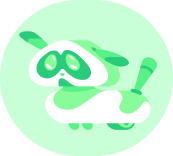textiles
Cards (71)
- Why are technical textiles developed?
- What are some properties of technical textiles?
- What are fibres?
- What is a fabric?
- What are agrotextiles primarily made from?
- What is one advantage of agrotextiles?
- What is a disadvantage of agrotextiles?
- What are the uses of agrotextiles?
- What are geotextiles used for?
- What is a key characteristic of geotextiles?
- What is a disadvantage of geotextiles?
- What are the advantages of geotextiles?
- What are construction textiles developed for?
- What is one use of construction textiles?
- What is a disadvantage of construction textiles?
- What are protective textiles used for?
- What is a disadvantage of protective textiles?
- What materials are environmentally friendly textiles made from?
- What is one advantage of using environmentally friendly textiles?
- What is one disadvantage of using environmentally friendly textiles?
- What are some examples of products made from technical textiles?
- What is one benefit of using environmentally friendly textiles to make school trousers?
- Can you give an example of a product made from specific materials based on their characteristics?
- What is a characteristic of materials used in farming?
- What is the purpose of reinforcements in textiles?
- What are examples of plant-based fibres?
- What are examples of animal-based fibres?
- What are examples of synthetic fibres?
- What are examples of regenerated fibres?
- What are examples of mineral fibres?
- What are examples of recycled fibres?
- What are the characteristics of animal-based fibres?
- What are the characteristics of plant-based fibres?
- What are the characteristics of synthetic fibres?
- What are the characteristics of mineral fibres?
- What are the characteristics of recycled fibres?
- What are the continuous improvements in the chemistry of textiles?
- What are the characteristics of cotton?
- What are the characteristics of wool?
- What are the characteristics of silk?
